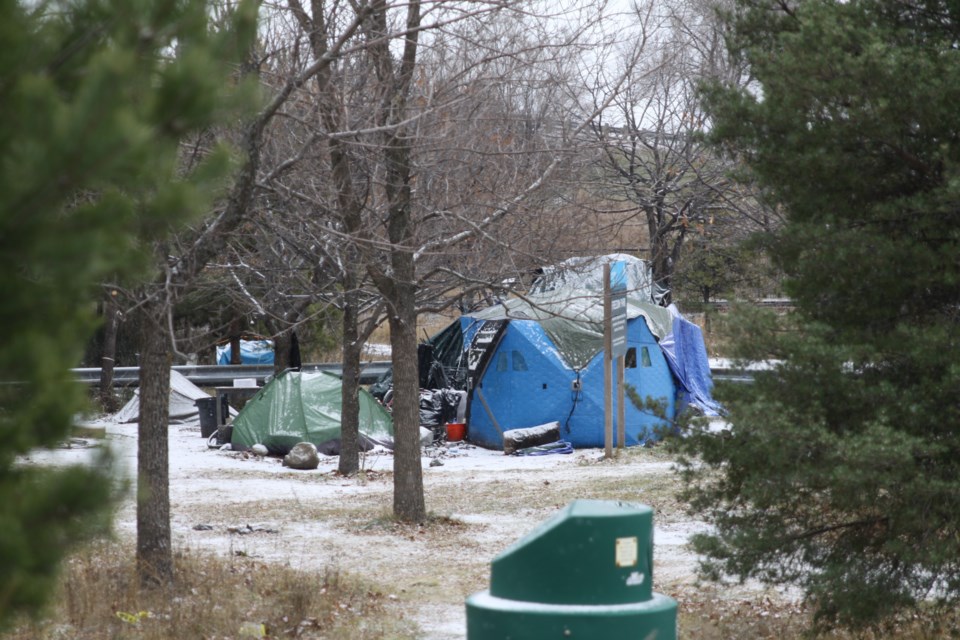THUNDER BAY — Homelessness is a growing problem province-wide, but in the north the crisis is getting worse at four times the rate seen in southern Ontario, according to a new report.
The Municipalities Under Pressure report calls for $11 billion in new funding in order to end chronic homelessness by 2035.
Across northern Ontario, the report estimated that known homelessness had risen by over 200 per cent between 2016 and 2024, and that in the next 10 years, could roughly double—at the least. The 2024 stats pegged the number of those without a place to live across the north at 5,377. The report estimates that, based on economic conditions, that figure could climb to between 10,674 and 26,633 by 2035.
The 135-page report was released Thursday. It is a collaboration between the Northern Ontario Service Deliverers Association, the Association of Municipalities of Ontario, and the Ontario Municipal Social Services Association. They partnered with HelpSeeker Technologies, a social service-focused software company.
According to the report, homelessness crisis in Ontario is only expected to get worse if nothing more is done, and that the north at large will be hard hit.
The Thunder Bay District Social Services Board is backing the call for billions in new funding to address the
Thunder Bay DSSAB chair Brian Hamilton said the findings provide further evidence that can back their efforts to lobby Queen’s Park for a broader supportive housing strategy.
“I mean, every single person, every single resident is able to see with their own eyes on the streets of Thunder Bay and the district that there's an issue here,” said DSSAB board chair Brian Hamilton, responding to the report’s release. “I think the crisis is very difficult to manage for businesses, for residents, and I think it's bubbled over into the public domain and it has for a long time.”
The local DSSAB has seen some significant provincial investment in recent years to build supportive housing—places that, not only provide a place to live, but also include access to a variety of social supports—and the board says that in the past three years, 190 supported transitional housing units have been built using that funding. Hamilton says that shows that broader strategies, backed up by appropriate funding, can work.
“The solution has to involve partners that are able to provide those care services that are going to enable people to be stabilized and successful in their tenancies, if we really, truly want to get people off the street for extended periods of time or permanently,” he said.
The Municipalities Under Pressure report projects that $11 billion appropriately spent over 10 years could effectively end chronic homelessness across the province. That would include $7.7 billion for one-time capital investments and $329 million annually for operational costs.
Hamilton said that the Thunder Bay DSSAB will again bring its supportive housing strategy to provincial officials at the upcoming Rural Ontario Municipal Association conference later this month.
“We need capital dollars to build more long-term legacy and affordable housing projects, and we really need the healthcare side on the addictions and the mental health to be able to support people where they live,” Hamilton said. “We need dollars behind these strategies, but we also need the political will of the governing party as well.”
